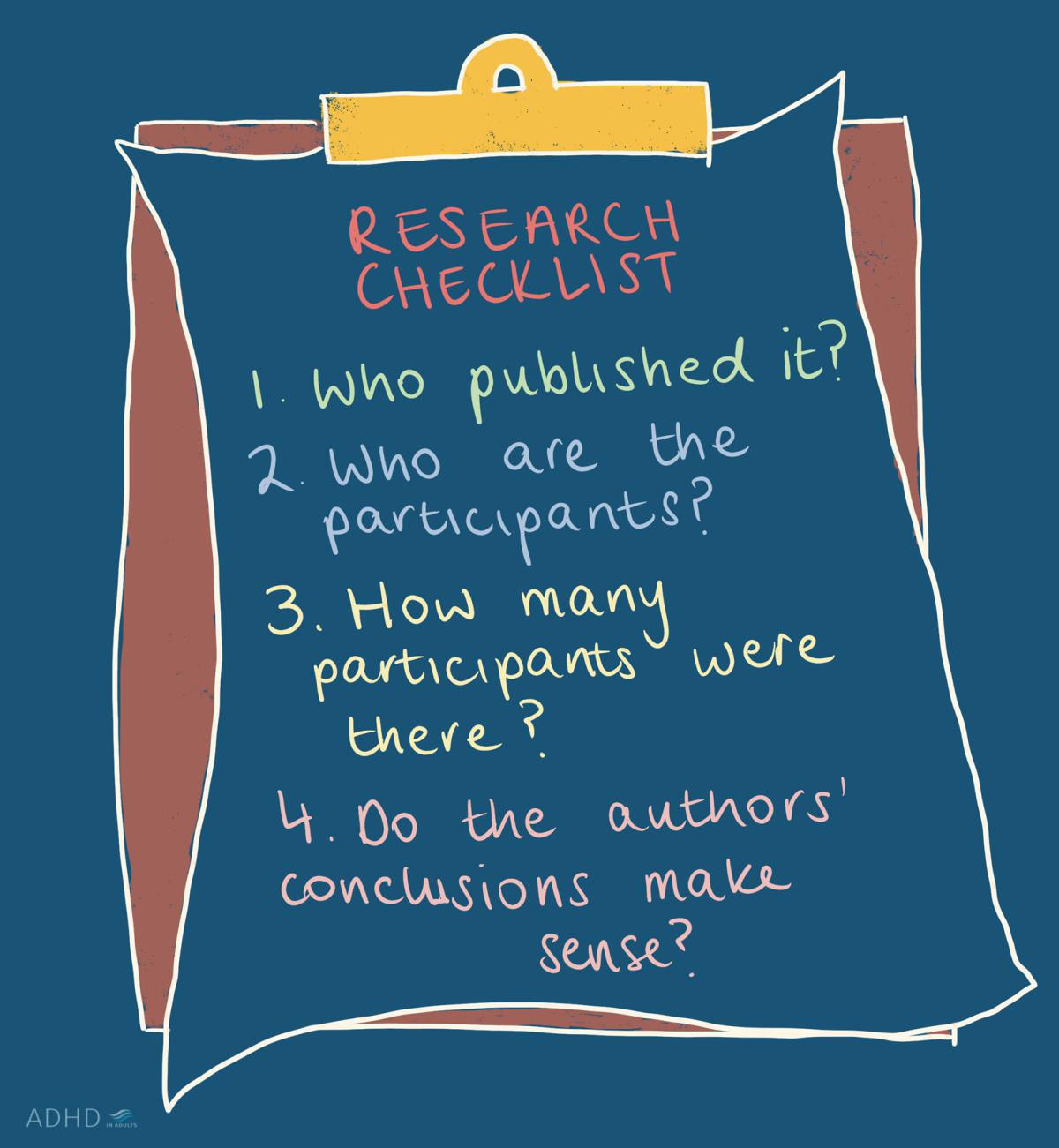More and more, researchers are investigating adult ADHD. This section is designed to highlight some of the recently published papers in the area of ADHD. When a paper is shared here, it is not an endorsement of the findings, authors or institutions who have published the research.
Scientific research goes through a rigorous process called ‘peer-review’ to be published. An author submits their paper to an academic journal, who then sends the paper off to experts in the field to be reviewed. While this is a thorough process, it is not perfect.
Just because research is published, does not mean the findings/facts or statements based on the research are fact.
It is especially important to practice healthy scepticism when reading media articles based on scientific research. News outlets often glamorise findings to get more clicks and headlines might not accurately represent the research at all.
Here are some questions to consider when reading research:
- Who published the research? – Some academic journals are known as ‘predatory journals’. These are journals who are looking for money off of authors and do not have a peer-review process. These journals can often be the source of misinformation or fake news. Check the journal to see what reputation it has. A major publisher of ADHD research is the ‘Journal of Attention Disorders’.
- Who are the participants? – Participants refer to the people who the research was conducted with. Often, research is done on undergraduate college students. While still valuable, findings might not accurately reflect everyone’s experiences so it is important to consider who the participants are. E.g. a study on children with ADHD will likely have different findings to adults with ADHD!
- How many participants are there? – ‘sample sizes’ or the amount of participants will be very different in different studies. This reflects the study design. For example, interview studies will only have a few adults with ADHD while population studies will have thousands. It’s not a bad thing to only have a few participants but it should make sense in the context of the study (it would be impossible to interview 4000 adults with ADHD – or very difficult at least!). Studies with statistics usually need at least 100 people for the statistics to work.
- Do the authors conclusions make sense? – This one can be tricky to tell but the authors’ conclusions or statements should be rooted in their findings. For example, the authors can’t conclude that playing video games affects ADHD symptoms if their study was all about diet!


